Witold Rybczynski's Blog, page 22
November 30, 2017
THE DARK SIDE
 What’s with all the black houses that have appeared in recent years? The all-black exteriors—blackened timber, black stain, or simple black paint—have become ubiquitous. Rural or urban, even old buildings are getting black-faced. Traditionally, architects avoided black facades, which not only look lugubrious but virtually eliminate shadows, which are—or were—one of the architect’s most effective tools. Modern houses tend not to have moldings and relief work, of course, so there are no shadows. And black does seem to be the modernist architect’s favorite fashion shade (Richard Rogers excepted). But fundamentally I think this phenomenon is a symptom of laziness—it’s a cheap way of standing out. Slap on a coat of Benjamin Moore’s Black Beauty and even the most pedestrian design looks striking.
What’s with all the black houses that have appeared in recent years? The all-black exteriors—blackened timber, black stain, or simple black paint—have become ubiquitous. Rural or urban, even old buildings are getting black-faced. Traditionally, architects avoided black facades, which not only look lugubrious but virtually eliminate shadows, which are—or were—one of the architect’s most effective tools. Modern houses tend not to have moldings and relief work, of course, so there are no shadows. And black does seem to be the modernist architect’s favorite fashion shade (Richard Rogers excepted). But fundamentally I think this phenomenon is a symptom of laziness—it’s a cheap way of standing out. Slap on a coat of Benjamin Moore’s Black Beauty and even the most pedestrian design looks striking.
November 18, 2017
MID-CENTURY EXPERIMENTS
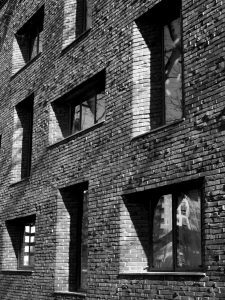
Hill College House, University of Pennylvania (Eero Saarinen, 1958)
In a recent article in Common\Edge, Duo Dickinson compares Eero Saarinen’s Morse and Stiles Colleges and Robert A. M. Stern’s Franklin and Murray Colleges and calls them “two well-built, rigorously planned dormitories.” Rigorously planned? I have read that Morse and Stiles have the least amount of fenestration per wall area of any of the Yale colleges (i.e. the rooms are dark), which may account for their unpopularity with students. And can a building that requires a $100 million dollar renovation after only 50 years really be “well-built”? I couldn’t find the original construction cost of Morse and Stiles, but another Saarinen college dorm, Hill College House at Penn, cost $4 million to build in 1958 ($33 million in current dollars). The building was just renovated for no less than $80.5 million. This covered not only improvements such as air-conditioning, but repairs to crumbling brickwork—after only 58 years! In a recent filmed interview, Kevin Roche, who was Saarinen’s chief design assistant at the time of Hill College House and Morse and Stiles, said “You’re lunging out into the future and so you do things that, in retrospect, may or may not work. That’s the nature of any experimental architecture.” It is, of course, the nature of experiments that they occasionally fail. Let us hope that the Stern Yale colleges fare better.
November 16, 2017
SOMETHING BORROWED
 We recently replaced a kitchen faucet. The product is a typical example of globalization. The ceramic cartridge—the soul of a faucet—is made in Hungary, the aerator comes from Italy, and the rest of the faucet was manufactured and assembled in China. The company that markets the faucet, despite its name—Kräus—is not German but American, based on Long Island. I believe that the design is American, too, although the inspiration is German. It reminds me of the door and window handles that Walter Gropius designed in 1923. By the way, it’s an excellent faucet.
We recently replaced a kitchen faucet. The product is a typical example of globalization. The ceramic cartridge—the soul of a faucet—is made in Hungary, the aerator comes from Italy, and the rest of the faucet was manufactured and assembled in China. The company that markets the faucet, despite its name—Kräus—is not German but American, based on Long Island. I believe that the design is American, too, although the inspiration is German. It reminds me of the door and window handles that Walter Gropius designed in 1923. By the way, it’s an excellent faucet.
October 21, 2017
GLASSES AND SHACKS
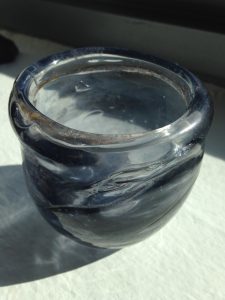 Aaron Betsky writes about the latest fashion among architecture students—Triple O, or Object-Oriented Ontology. Betsky is generally enthusiastic about intellectual fads, but even he seems to be uneasy about exactly what Triple O means in the context of architecture. That aside, this raises an important pedagogic issue, that is, Learning to Walk Before You Run. Many years ago I spent a month in Frauenau, Bavaria, with the great glassblower Erwin Eisch. For reasons that now elude me, I wanted to learn his craft, and he generously allowed me to work in his studio (which was next to the family-owned glassworks). The nature of molten glass is such that you must work quickly to shape it. I immediately got carried away by the endless organic possibilities of the material. After a while Erwin suggested, “Why don’t you just make a glass.” It took me the rest of the day—and many failed attempts—to produce a single, rather misshapen bowl-shaped object. I remember that event when I look at student work today, vainglorious attempts to invent a new architecture by neophytes who have never built anything. They should just make a glass—or maybe a shack
Aaron Betsky writes about the latest fashion among architecture students—Triple O, or Object-Oriented Ontology. Betsky is generally enthusiastic about intellectual fads, but even he seems to be uneasy about exactly what Triple O means in the context of architecture. That aside, this raises an important pedagogic issue, that is, Learning to Walk Before You Run. Many years ago I spent a month in Frauenau, Bavaria, with the great glassblower Erwin Eisch. For reasons that now elude me, I wanted to learn his craft, and he generously allowed me to work in his studio (which was next to the family-owned glassworks). The nature of molten glass is such that you must work quickly to shape it. I immediately got carried away by the endless organic possibilities of the material. After a while Erwin suggested, “Why don’t you just make a glass.” It took me the rest of the day—and many failed attempts—to produce a single, rather misshapen bowl-shaped object. I remember that event when I look at student work today, vainglorious attempts to invent a new architecture by neophytes who have never built anything. They should just make a glass—or maybe a shack
October 16, 2017
OUTSIDERS
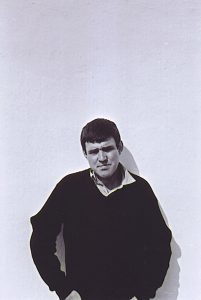
Portrait of the artist as a young émigré, Formentera, 1967
I recently received an unusual request from the architectural writer Fred Bernstein. “Since Trump was elected, as a subtle political statement, I have been posting profiles on Facebook of immigrants who have made a contribution to the built environment.” His request brought me up short. I’ve never thought of myself as an immigrant. Born in Scotland to Polish parents displaced by the Second World War (my father served in the Polish army), I was not technically an immigrant, but I was hardly a Scot. I grew up in England, a proper cricket-playing English schoolboy, but that was just a surface impression. “Although I wore a blazer and a schoolboy’s cap, I wasn’t really English,” I wrote in My Two Polish Grandfathers. “For one thing, I always spoke Polish with my parents, although I can’t recall if I learned it first, or together with English. We also ate different foods, barszcz (beet soup) and gołąbki (stuffed cabbage rolls). At Christmastime we had babka instead of plum pudding, and jellied carp instead of roast beef. I got my presents on Christmas Eve instead of Christmas Day, and there was always something under my pillow on St. Nicholas’s Day.” When my parents moved to Canada I became an actual immigrant, not that Canadians wore their nationalism on their sleeves. We lived in Quebec, which was mostly French, but I never considered myself un Anglais. I suppose I was Other. Nor did Canadian-ness play a big role in my architectural education. The architects my classmates and I admired were mostly Europeans: Aalto, Van Eyck, Frei Otto, Ralph Erskine, Georges Candilis, Shadrach Woods. The last three were immigrants, or émigrés, as were so many prominent practitioners of the 1960s: Mies and Corbusier, of course, and Breuer, Saarinen, Pei, and Sert. So were my two most influential teachers, Norbert Schoenauer (Hungary) and Peter Collins (England), and my mentor Alvaro Ortega (though he, a Colombian and UN worker, was really a citizen of the world). My first job was with Moshe Safdie (born in Haifa). Many of my architect friends—Jack Diamond, Allan Greenberg, Michael McKinnell, the late John Belle, the late Bing Thom—are/were immigrants. Perhaps that’s what attracted me to architecture, it deals with a sense of place yet so many of its leading lights were—like me—placeless. I now live in Philadelphia. The two best architects of the last 100 years, Paul Cret and Louis Kahn, were both immigrants. A coincidence. Maybe.
September 15, 2017
IKE MEMORIAL

The Eisenhower Memorial is slowly edging towards realization as the GSA has recently hired a construction company to begin work. Now a major change is revealed. The long mesh screen in front of the Education Building originally carried a photographic image of the Kansas prairie (Ike’s birthplace). This was later changed to another image, the landscape around Omaha Beach, one of the landing sites of the WWII Normandy invasion of which Eisenhower was Supreme Commander. Neither image was particularly striking, or for that matter, particularly recognizable. In any case, I’ve always thought that photography was the wrong inspiration for what Gehry insisted on calling a “tapestry.” A block-long photographic image doesn’t make me think of a Gobelin, it conjures up a billboard. Now the image has changed again. It is a drawing, presumably by Gehry, of Pointe du Hoc, the promontory between Utah and Omaha Beaches that was scaled by U. S. Rangers during the invasion. Critics will say that the impressionistic drawing it too much Gehry. But is the Sherman Memorial in New York City too much Saint-Gaudens? I think not. A drawing seems right to me.
July 26, 2017
COPYCATS
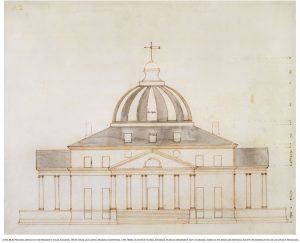
Thomas Jefferson’s drawing for the President’s House based on Palladio’s Villa Rotonda
“Our lust for originality is wrecking the city, delivering a rash of formally new, but ultimately anti-urban hideous skyline baubles reducing city-making to a spectacle of super-size billboard branding gestures while inhibiting the multiplication of good ideas,” writes Phineas Harper in a recent post on Dezeen. He correctly questions the modern obsession with originality, and asks rhetorically, “Is bad originality really preferable to a brilliant copy?” Of course, it isn’t—never has been. What Harper does not mention is that copying had a long and honorable tradition in architecture. Scamozzi copied Palladio’s Villa Rotonda, so did Colen Campbell, Lord Burlington, Thomas Jefferson, and most recently Julian Bicknell in Cheshire. Some of the copies are more faithful than others (Jefferson added skylights to the dome), but all recognize that Palladio’s was a rich idea, worth exploring further. Palladio himself used motifs such as Serlianas, which were derived from others. Basing one’s work on an earlier model was partly hommage to a masterwork, and partly a recognition that true invention in architecture is rare, and that good ideas are worth repeating. One of the sins of the modernist revolution was that it undermined this tradition and actually made it dishonorable to copy earlier precedents. Ever since, architecture has been caught in a downward spiral of diminishing originality.
July 16, 2017
NORTH OF THE BORDER
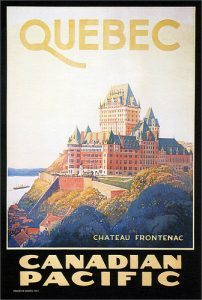 The Canadian design mag, Azure, ran a post recently titled “Canada 150: Canada’s Future Role in Architecture and Design.” The magazine posed the question to a number of prominent and not-so-prominent architects. Predictably, perhaps, the answers were uniformly upbeat: a world leader in sustainable design, a catalyst for change, in the forefront of developing pluralistic cultural identity. Perhaps it’s worth looking back to get an idea of the future. International leadership doesn’t loom large. The list of Canadian architects whose names would appear on an encyclopedia of world architecture covering 1867-2017 would not be long. There was no H. H. Richardson to shake up the architectural scene, no Charles McKim to establish a classical standard for civic buildings, no Frank Lloyd Wright to preach a northern organic gospel. Modernism, when it arrived, tended to be a pale imitation of what was going on south of the border. It is not until Arthur Erickson that we find a native-born Canadian architect who develops an original style that has an impact on the international scene. He is followed by Moshe Safdie and John Andrews, immigrants both, who make their mark with Habitat and Scarborough College. I would add two stylistic outliers, whose idiosyncratic approach ruled them out of fashion but who deserve at least a footnote: Montreal’s Ernest Cormier and Ron Thom. The latter’s Massey College is an original masterwork that demonstrates how Wrightian ideas might be adapted north of the 49th parallel. Erickson might have become Canada’s Aalto, had his architecture been a little less theatrical, a little more, well, Canadian. The frosty Canadian climate and long winters don’t demand—or tolerate—flamboyance or whimsy. They do demand robust construction; zoomy shapes covered in Dryvit just don’t cut it. In any case, Canadians were never much interested in iconic buildings. There is no neoclassical Macdonald Memorial or Parliamentary Dome. Perhaps the closest you get to a national icon, apart from the Peace Tower, is the series of romantic chateau-like CPR hotels built at the end of the nineteenth century—and they were designed by Bruce Price, an American,
The Canadian design mag, Azure, ran a post recently titled “Canada 150: Canada’s Future Role in Architecture and Design.” The magazine posed the question to a number of prominent and not-so-prominent architects. Predictably, perhaps, the answers were uniformly upbeat: a world leader in sustainable design, a catalyst for change, in the forefront of developing pluralistic cultural identity. Perhaps it’s worth looking back to get an idea of the future. International leadership doesn’t loom large. The list of Canadian architects whose names would appear on an encyclopedia of world architecture covering 1867-2017 would not be long. There was no H. H. Richardson to shake up the architectural scene, no Charles McKim to establish a classical standard for civic buildings, no Frank Lloyd Wright to preach a northern organic gospel. Modernism, when it arrived, tended to be a pale imitation of what was going on south of the border. It is not until Arthur Erickson that we find a native-born Canadian architect who develops an original style that has an impact on the international scene. He is followed by Moshe Safdie and John Andrews, immigrants both, who make their mark with Habitat and Scarborough College. I would add two stylistic outliers, whose idiosyncratic approach ruled them out of fashion but who deserve at least a footnote: Montreal’s Ernest Cormier and Ron Thom. The latter’s Massey College is an original masterwork that demonstrates how Wrightian ideas might be adapted north of the 49th parallel. Erickson might have become Canada’s Aalto, had his architecture been a little less theatrical, a little more, well, Canadian. The frosty Canadian climate and long winters don’t demand—or tolerate—flamboyance or whimsy. They do demand robust construction; zoomy shapes covered in Dryvit just don’t cut it. In any case, Canadians were never much interested in iconic buildings. There is no neoclassical Macdonald Memorial or Parliamentary Dome. Perhaps the closest you get to a national icon, apart from the Peace Tower, is the series of romantic chateau-like CPR hotels built at the end of the nineteenth century—and they were designed by Bruce Price, an American,
July 11, 2017
THE PROMS
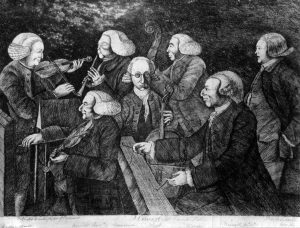 This week the short list was announced for London’s new Center for Music, which will be the future home of the London Symphony Orchestra and the Guildhall School of Music and Drama. The usual suspects include Frank Gehry, Renzo Piano, Norman Foster, and Snøhetta. Traditionalists need not apply; that’s a shame. Léon Krier has recently written about a new site for the hall, and it would have been nice to see at least one name like John Simpson or Robert Adam on the list. Or Bill Rawn of Boston, who has designed some admirable low-key concert halls. But the Symphony Orchestra wanted fireworks. Gehry’s Disney Hall is hard to beat, but London may not be the place for his brand of acrobatics. Piano’s hall will have red seats, and be predictably workmanlike. Foster will be Foster. My money is on Amanda Levete. She is teaming up with Jack Diamond and Donald Schmitt of Toronto, who have designed opera houses in Toronto and St. Petersburg, and a concert hall in Montreal. If London wants a building that sounds good and can be built without breaking the bank—or cutting corners—they should consider this team.
This week the short list was announced for London’s new Center for Music, which will be the future home of the London Symphony Orchestra and the Guildhall School of Music and Drama. The usual suspects include Frank Gehry, Renzo Piano, Norman Foster, and Snøhetta. Traditionalists need not apply; that’s a shame. Léon Krier has recently written about a new site for the hall, and it would have been nice to see at least one name like John Simpson or Robert Adam on the list. Or Bill Rawn of Boston, who has designed some admirable low-key concert halls. But the Symphony Orchestra wanted fireworks. Gehry’s Disney Hall is hard to beat, but London may not be the place for his brand of acrobatics. Piano’s hall will have red seats, and be predictably workmanlike. Foster will be Foster. My money is on Amanda Levete. She is teaming up with Jack Diamond and Donald Schmitt of Toronto, who have designed opera houses in Toronto and St. Petersburg, and a concert hall in Montreal. If London wants a building that sounds good and can be built without breaking the bank—or cutting corners—they should consider this team.
July 2, 2017
FAKE NEWS
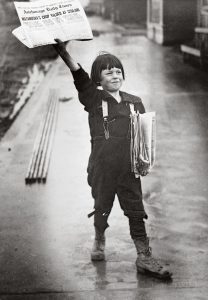 The other day I read in The Architects Newspaper that the dean of IIT had stepped down. While this is undoubtedly of keen interest to IIT faculty and students why is it considered news? Perhaps because five years ago, when Wiel Arets was appointed dean, that decision was widely reported. But why was that event newsworthy? Architecture schools operate under a handicap where publicity is concerned. Law schools periodically gain attention when their graduates attain high positions, the Supreme Court or even the White House; business schools are lauded for the wealth of their graduates; and medical schools can announce the occasional cure for this or that. But architecture schools rarely conduct groundbreaking research, and when all is said and done the education of architectural professionals is a dull affair. Every year, year in and year out, a new group of graduates is sent out to stock the nation’s drafting rooms, and year in and year out a new cohort arrives at the door. Not much news there. Architecture schools attempt to promote exhibitions of their students’ work, but it is after all, student work, that is, the exercises of trainees, of little interest to the world at large. Which brings us to the appointment of deans and chairs—not big news in itself, but a change in the routine. Or perhaps news, if the name is recognizable, not an obscure academic, of course, but a globetrotting practitioner. In a culture driven by celebrity, that is sufficient to pass for news.
The other day I read in The Architects Newspaper that the dean of IIT had stepped down. While this is undoubtedly of keen interest to IIT faculty and students why is it considered news? Perhaps because five years ago, when Wiel Arets was appointed dean, that decision was widely reported. But why was that event newsworthy? Architecture schools operate under a handicap where publicity is concerned. Law schools periodically gain attention when their graduates attain high positions, the Supreme Court or even the White House; business schools are lauded for the wealth of their graduates; and medical schools can announce the occasional cure for this or that. But architecture schools rarely conduct groundbreaking research, and when all is said and done the education of architectural professionals is a dull affair. Every year, year in and year out, a new group of graduates is sent out to stock the nation’s drafting rooms, and year in and year out a new cohort arrives at the door. Not much news there. Architecture schools attempt to promote exhibitions of their students’ work, but it is after all, student work, that is, the exercises of trainees, of little interest to the world at large. Which brings us to the appointment of deans and chairs—not big news in itself, but a change in the routine. Or perhaps news, if the name is recognizable, not an obscure academic, of course, but a globetrotting practitioner. In a culture driven by celebrity, that is sufficient to pass for news.
Witold Rybczynski's Blog
- Witold Rybczynski's profile
- 178 followers



